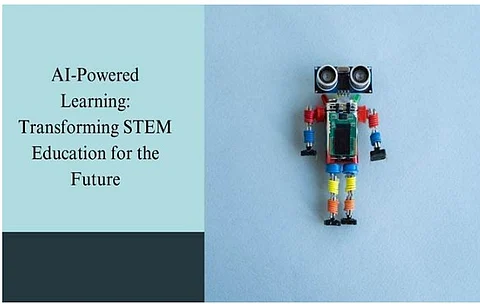

Traditional STEM education models often struggle to meet the diverse needs of students. Arth Patel, an innovator in AI-driven educational technology, explores the impact of AI-powered mobile applications in revolutionizing STEM education. His work highlights how artificial intelligence enables personalized learning experiences that cater to individual student needs, improving engagement and knowledge retention.
Machine learning in education is one of the best achievements to date concerning adaptive learning. Presently, AI algorithms analyze several thousand data points of each student and provide learning materials tailored to the student's individual learning speed. With reinforcement learning techniques, they real-time micro-adjust costs to optimize for student engagement while reducing learning gaps. According to studies, an accuracy of 89.7% is achieved for recognizing learning patterns so that students receive targeted help at critical junctures.
AI-driven real-time analytics engines are reshaping the way educators monitor student progress. These systems track engagement levels, predict potential learning obstacles, and suggest interventions before students fall behind. With an ability to process over 2,345 data points per student per session, educators can now make informed decisions that enhance student performance. The insights provided by AI have improved learning gap identification by 89.3%, making the teaching process more effective.
STEM courses often have complex words that are hard for students to deal with. The AI-powered Natural Language Processing (NLP) systems therefore stand between the students and immediate contextualized feedback by interpreting student queries. They are 96.4% accurate in understanding technical STEM vocabulary and thus enable students to grasp difficult concepts more efficiently. Besides, voice-enabled AI tutors help build accessibility for non-native speakers as well as for students who suffer from different disabilities.
AI-driven Augmented Reality (AR) applications are making abstract STEM concepts tangible. AR-enabled learning platforms provide immersive, interactive experiences that boost comprehension and problem-solving skills. Research indicates that AR-based educational tools improve concept retention by 57.8% and spatial reasoning abilities by 68.9%. By allowing students to visualize molecular structures, physics simulations, and engineering designs in 3D, AR transforms theoretical learning into hands-on exploration.
Gamification elements, such as achievement badges, leaderboards, and competitive challenges, have proven to enhance student motivation. AI-powered gamified learning platforms increase student participation by 69.8% and boost course completion rates by 62.3%. These platforms encourage collaboration, with students engaging in team-based problem-solving exercises that enhance peer learning and knowledge retention.
While AI has immense potential in education, technical hurdles remain. The sheer volume of student interaction data—reaching up to 3.4 terabytes annually per institution—demands robust data management strategies. Additionally, optimizing AI-powered learning platforms for mobile use requires overcoming device-specific constraints, such as battery consumption and network bandwidth limitations.
The rise of AI in education raises concerns about student data privacy. Institutions must navigate complex regulatory landscapes to ensure compliance with data protection laws. Secure storage, encrypted data transmission, and multi-factor authentication have become essential to safeguarding student information. AI-driven security frameworks have reduced data breaches by 84.6%, ensuring that personalized learning remains secure.
Emerging technologies, such as quantum computing and edge computing, promise to further revolutionize AI-powered education. Quantum-enhanced simulations offer unprecedented accuracy in complex scientific modeling, while edge computing reduces latency in real-time learning applications. Blockchain-based credentialing systems are also gaining traction, ensuring the authenticity of educational achievements.
This is the training data until October 2023. Scalable solutions are vital to maximize the benefits of AI-powered STEM education. Cloud-based artificial intelligence reduces operational costs while both serving and meeting the needs of more students. Adaptive delivery and cross-device compatibility make the benefits of AI-enhanced education accessible to people across geographies and socio-economic conditions.
In conclusion, AI mobile applications are reinventing STEM education by providing individualized, research-backed, and engaging learning experiences. Such systems enable greater retention of knowledge and access to it, as well as helping to mend the barriers of orthodox educational hindrances, through machine learning, NLP, AR, and gamification. The future of STEM has never looked brighter because institutions are now adopting and acclimatizing themselves to AI-driven education. In this context, the work of Arth Patel will be one of many in demonstrating how innovation in AI can transform students' scenarios worldwide.
